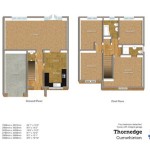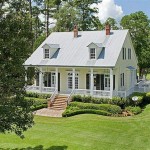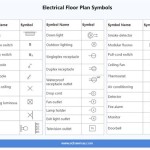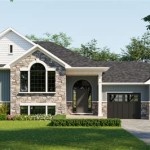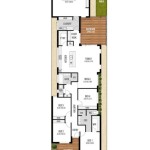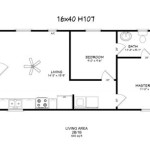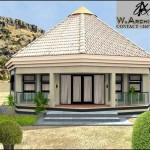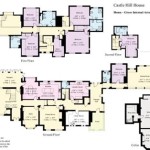Tri-Level House Plans 1980s: A Comprehensive Guide to Design and Features
In the realm of residential architecture, the 1980s marked a distinct era characterized by bold designs and functionalism. Tri-level house plans emerged as a popular choice during this time, offering homeowners a unique blend of space, style, and versatility. This comprehensive guide delves into the essential aspects of tri-level house plans from the 1980s, providing insights into their design principles and key features.
Multi-Level Layout for Efficient Space Utilization
The defining characteristic of tri-level house plans is their distinctive multi-level layout. Typically featuring a split-level design, these homes incorporate three distinct living areas arranged vertically. The main level often houses the living room, dining room, and kitchen, while the lower level accommodates bedrooms and bathrooms. An upper level, commonly known as the loft or mezzanine, can serve as an additional living space, home office, or guest room. This clever use of vertical space allows for efficient space utilization while creating a sense of separation and privacy between different areas of the home.
Expansive Windows and Natural Light
Tri-level house plans from the 1980s emphasized natural light and openness. Expansive windows, both on the front and back of the house, were a common feature. Large sliding glass doors or French windows provided seamless transitions between indoor and outdoor living spaces. This abundance of natural light created a bright and airy atmosphere within the home, reducing the need for artificial lighting during the day.
Open and Flowing Floor Plans
In line with the overall design philosophy of the 1980s, tri-level house plans often incorporated open and flowing floor plans. The main living area was typically designed with minimal walls or partitions, allowing for a spacious and interconnected feel. This design approach promoted a sense of togetherness and facilitated easy movement between different areas of the home.
Functional Kitchens and Bathrooms
Kitchens and bathrooms in tri-level house plans from the 1980s were designed with both style and functionality in mind. Kitchens often featured U-shaped or L-shaped layouts, maximizing counter and storage space. Built-in appliances, such as ovens, microwaves, and dishwashers, were common, adding to the convenience and efficiency of meal preparation. Bathrooms, although typically smaller in size, were well-equipped with modern fixtures and finishes, ensuring both comfort and functionality.
Exterior Architectural Details
The exterior of tri-level house plans from the 1980s was characterized by a mix of modern and traditional elements. Geometric shapes, sharp angles, and clean lines were often combined with more traditional features, such as pitched roofs and bay windows. Stucco and brick were popular exterior finishes, providing a durable and attractive façade. Multi-level decks and patios were also common, offering additional outdoor living spaces and enhancing the home's connection to its surroundings.
Energy Efficiency Features
While energy efficiency was not a primary focus in home design during the 1980s, some tri-level house plans incorporated sustainable elements. These homes may have featured double-paned windows, energy-efficient appliances, and insulation in walls and roofs to help reduce energy consumption. Passive solar design principles were also sometimes employed, maximizing natural light and heat gain to minimize the need for artificial heating and cooling systems.
Conclusion
Tri-level house plans from the 1980s offer a unique combination of space, style, and functionality. Their multi-level layout, expansive windows, open floor plans, functional kitchens and bathrooms, and distinctive exterior details make them a timeless choice for homeowners seeking a home that meets their modern lifestyle needs. Whether you are considering building a new home or renovating an existing one, understanding the essential aspects of tri-level house plans from the 1980s can provide valuable insights and inspiration for creating a home that is both stylish and livable.

Pin By Kelly Case On 20th Century Houses 1950 1980 Mid Modern House Plans Vintage

Untitled House Plans With Pictures Mid Century Modern Vintage

Mid Century Modern Ottawa Favourite Plans South Split Level Floor House

175 Home Plans Multi Level Two Story Chirgotis 1979 Populuxebooks
Architecture Split Level Houses Why Cyburbia Urban Planning Placemaking And More

Can A Raised Ranch Home Become Traditional Laurel

Bi Level Split Homes Offered Hybrid Design In Lancaster From 1960s To 80s Architecture Column Com
Architecture Split Level Houses Why Cyburbia Urban Planning Placemaking And More

Bi Level Split Homes Offered Hybrid Design In Lancaster From 1960s To 80s Architecture Column Com

Vintage House Plans 2340 Mid Century Modern

